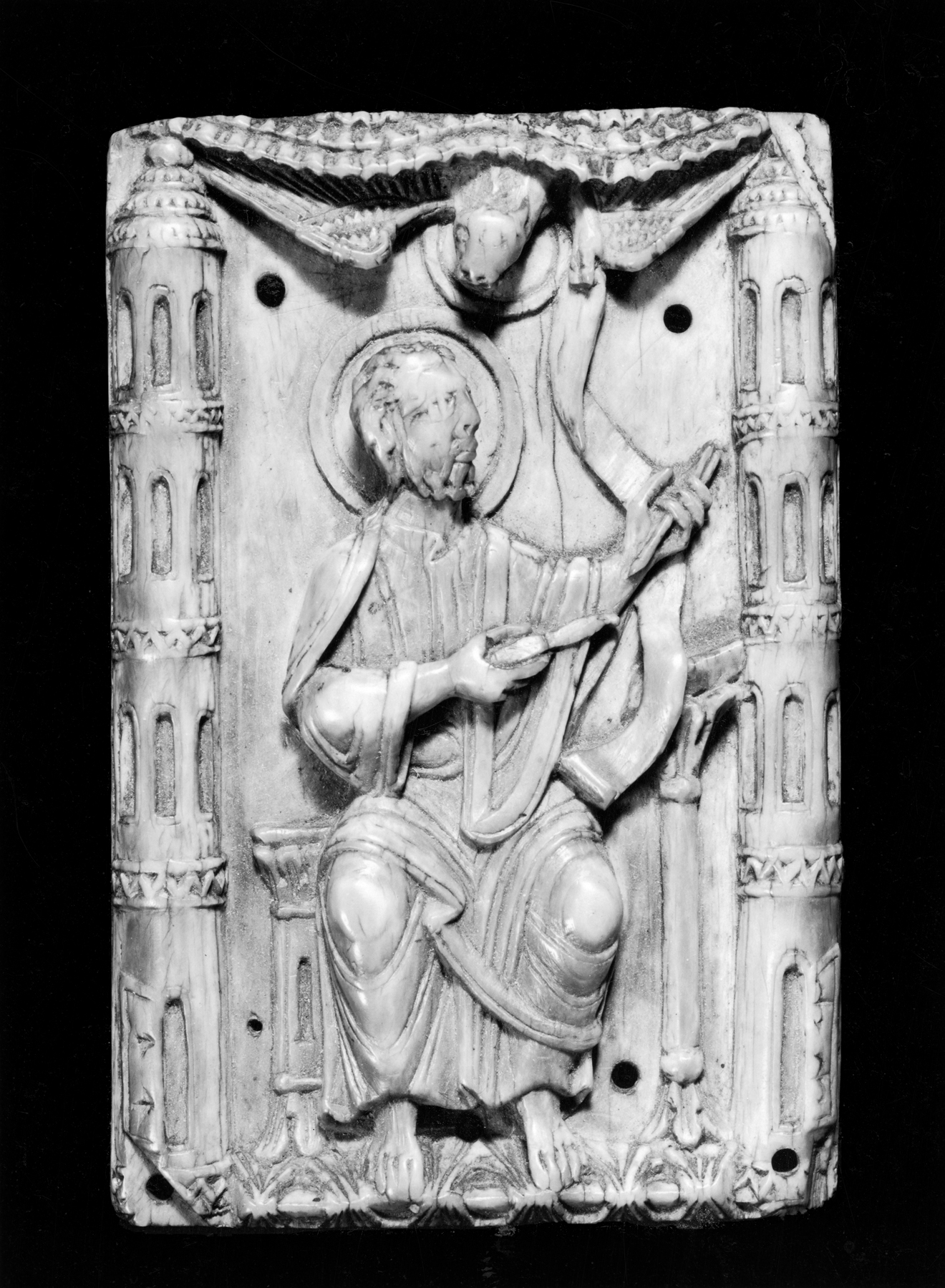Saint Luke the Evangelist
(Medieval Europe )
St. Luke is seated at a lectern writing his Gospel, with his symbol, a winged ox, emerging from a cloud above. The abstract, linear quality of the drapery, with its zigzag folds, is characteristic of 11th-century style. This book-cover plaque originally would have been seen with plaques of the other three Evangelists, serving as "author portraits" for the Gospel texts. It may have been made in the same workshop as the ivories on the cover of the Mondsee Gospels (Walters W.8).
Provenance
Provenance (from the French provenir, 'to come from/forth') is the chronology of the ownership, custody, or location of a historical object. Learn more about provenance at the Walters.
Henry Walters, Baltimore, 1929, by purchase; Walters Art Museum, 1931, by bequest.
Exhibitions
| 1983-1984 | Ivory: The Sumptuous Art. The Walters Art Gallery, Baltimore. |
| 1961 | A Medieval Treasury from Southern Collections. Ackland Art Center, University of North Carolina at Chapel Hill, Chapel Hill. |
Conservation
| Date | Description | Narrative |
|---|---|---|
| Examination | other |
Geographies
Germany, Regensburg (Place of Origin)
Measurements
3 3/4 x 2 9/16 x 3/8 in. (9.5 x 6.5 x 1 cm)
Credit Line
Acquired by Henry Walters, 1929
Location in Museum
Centre Street: Third Floor: Migration and Early Medieval Art
Accession Number
In libraries, galleries, museums, and archives, an accession number is a unique identifier assigned to each object in the collection.
In libraries, galleries, museums, and archives, an accession number is a unique identifier assigned to each object in the collection.
71.139






